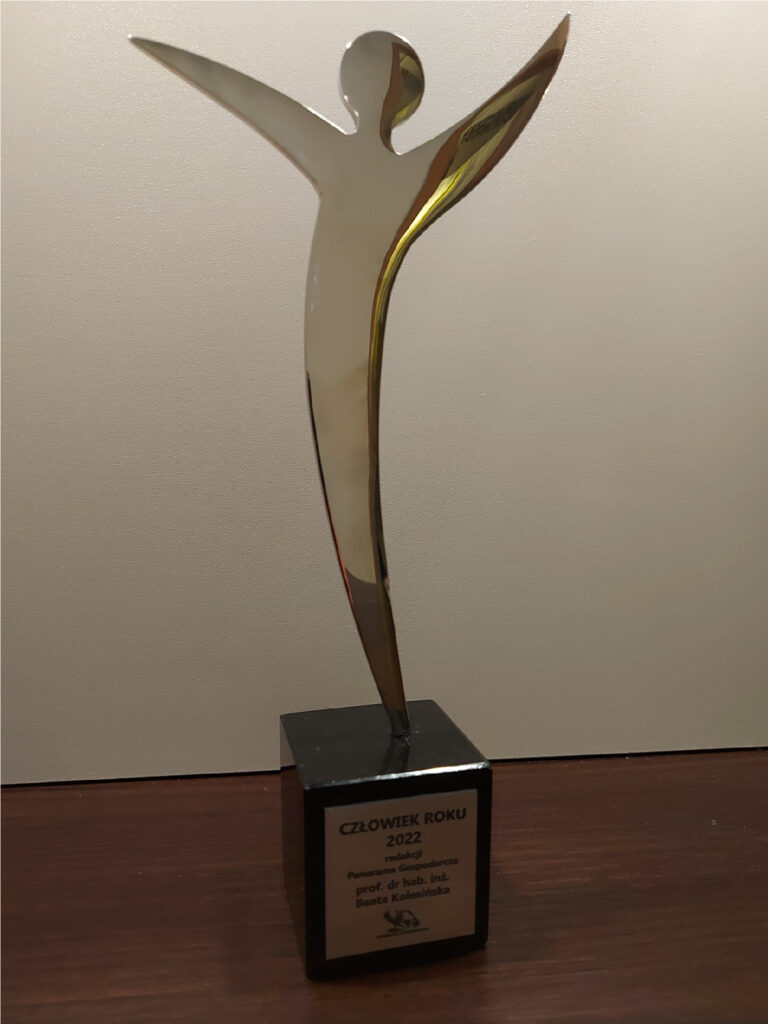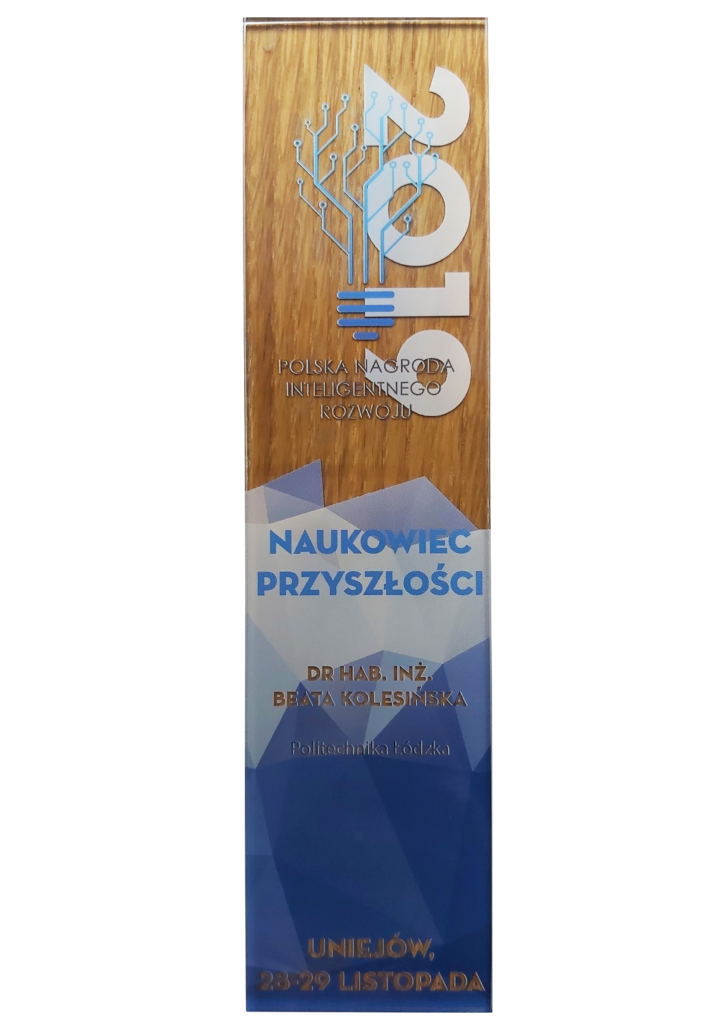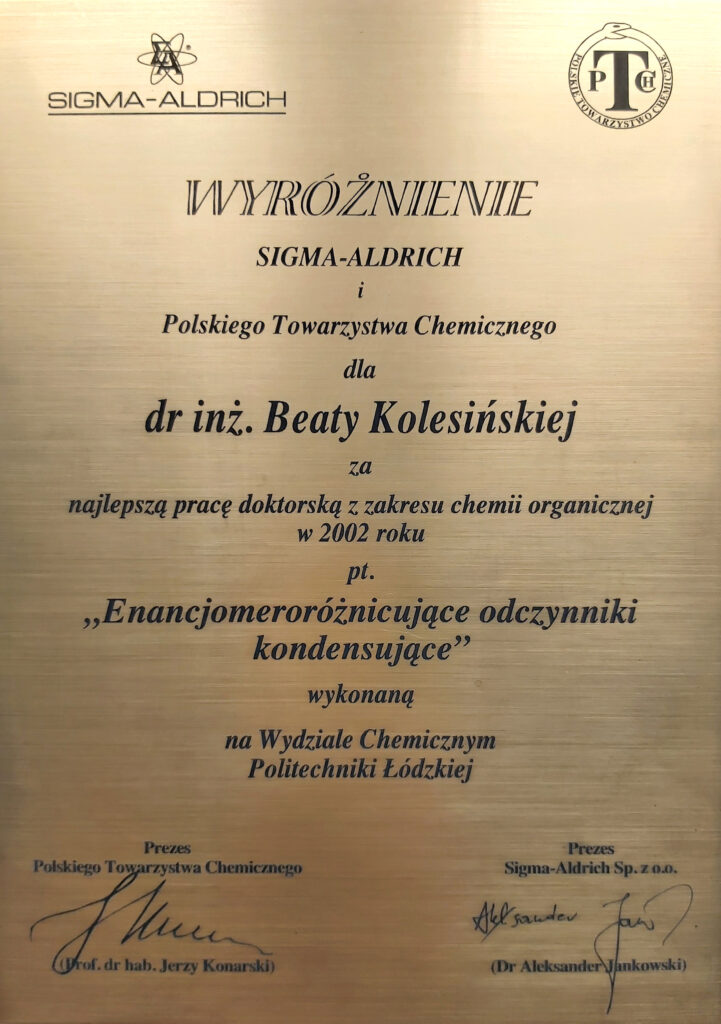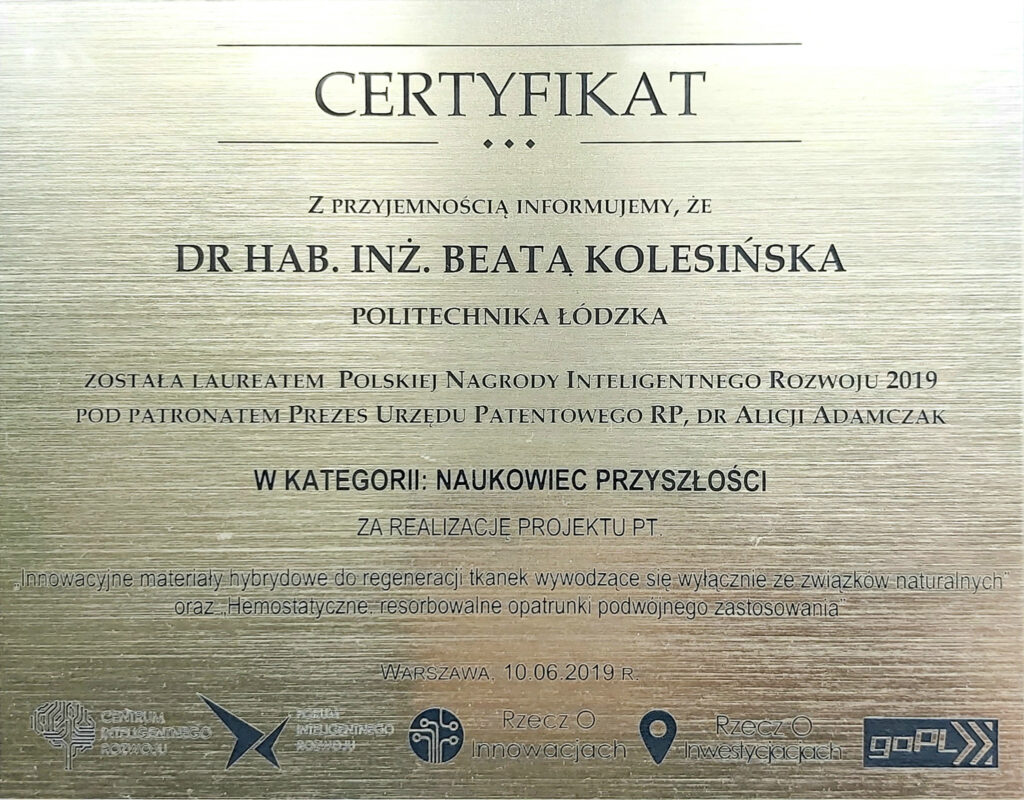Main project
Innovative hybrid materials
useful in the manufacture of dressings
for the treatment of diabetic foot
Project manager
Prof. PhD. Eng.
Beata Kolesińska
Professor Beata Kolesinska is head of the Peptide and Protein Chemistry and Engineering research group at the Institute of Organic Chemistry, Technical University of Lodz. Her scientific career has been associated with the Technical University of Lodz since
2003.
She is the author of over 100 publications and co-author of patents and patent applications in the field of organic chemistry, chemistry of natural compounds, including peptides and proteins and their conjugates with solid matrices. He also conducts research on the search for peptides and peptidomimetics useful in preventing the process of protein/polypeptide aggregation, which is the cause of many amyloidoses. She collaborates with research entities in medicine, biology, materials and biomaterials engineering, as well as with industrial partners in the medicines, medical devices and food processing sectors. She has received numerous awards for scientific achievements both nationally and internationally.

Team
Scientists working on the project

PhD. Eng.
Justyna Frączyk

PhD. Eng.
Anna Gajda

PhD. Eng.
Łukasz Janczewski

PhD. Eng.
Krzysztof Kaczmarek

PhD. Eng.
Joanna Waśko
Team
Team members

M.Sc. Eng.
Angelika Becht
Doctoral student at the Interdisciplinary Doctoral School of Łódź University of Technology

M.Sc. Eng.
Aleksandra Czerchawy
Doctoral student at the Interdisciplinary Doctoral School of Łódź University of Technology
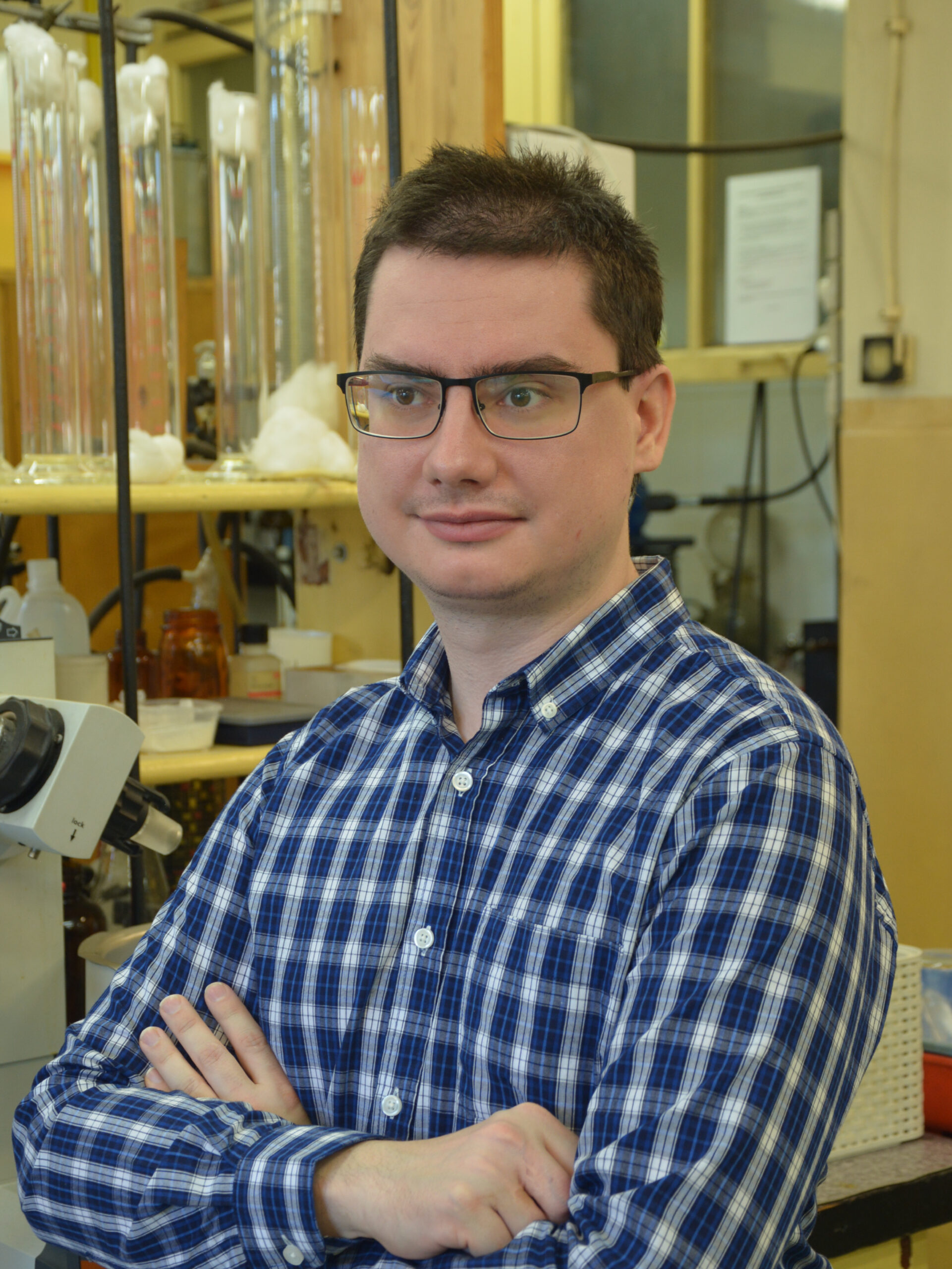
M.Sc. Eng.
Dariusz Zieliński
Doctoral student at the Faculty of Chemistry of the Technical University of Lodz University of Technology

M.Sc. Eng.
Sylwia Magdziarz
Doctoral student at the Interdisciplinary Doctoral School of Łódź University of Technology

M.Sc. Eng.
Piotr Rosiak
Doctoral student at the Interdisciplinary Doctoral School of Łódź University of Technology

M.Sc. Eng.
Katarzyna Czerczak-Kwiatkowska
PhD student at the Department of Chemistry, Technical University of D. student at the Faculty of Chemistry of the Technical University of Lodz within the InterChemMed programme
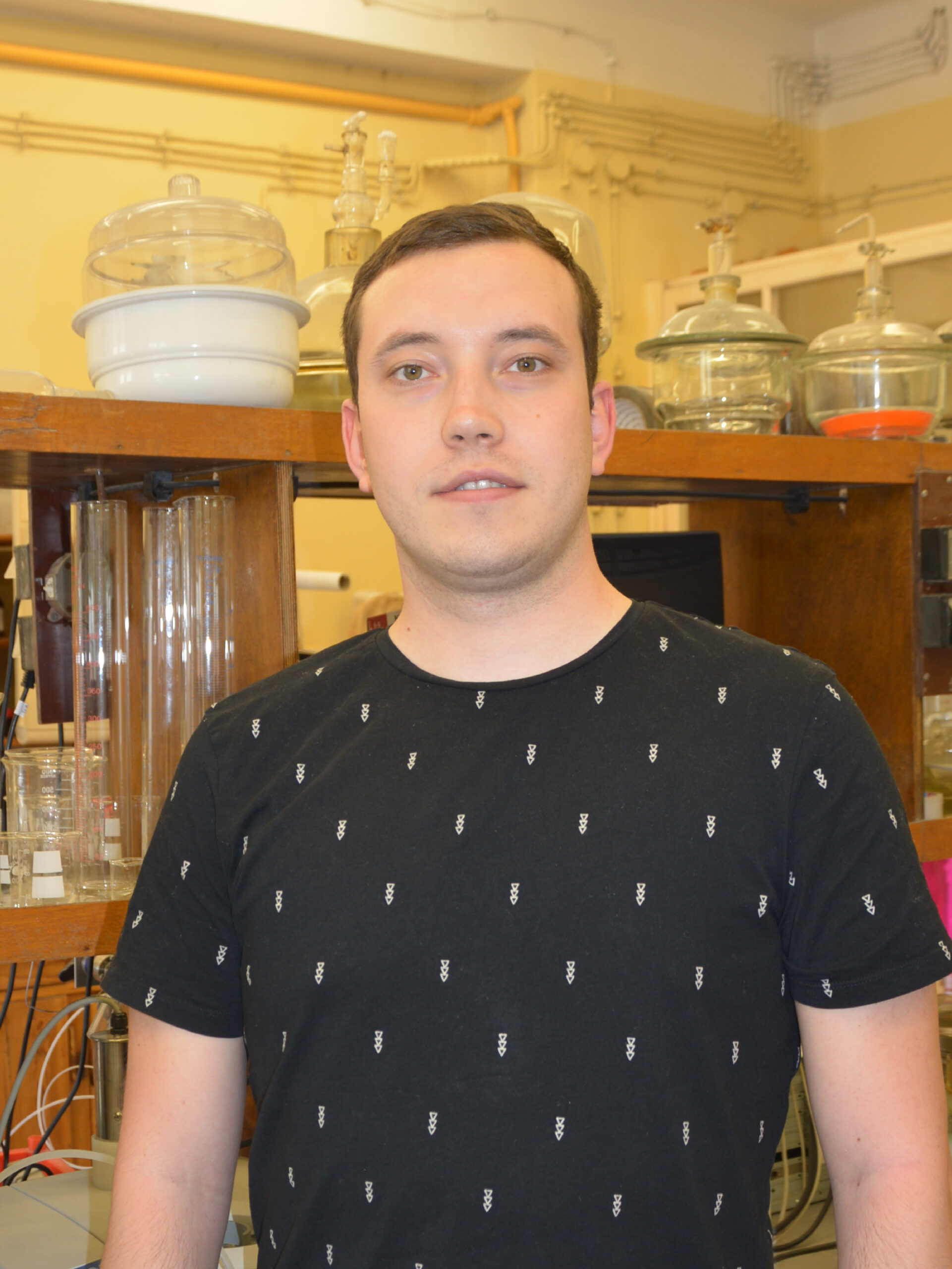
M.Sc. Eng.
Łukasz Banach
Doctoral student at the Interdisciplinary Doctoral School of Łódź University of Technology

M.Sc. Eng.
Piotr Jędrzejczak
Doctoral student at the Interdisciplinary Doctoral School of Łódź University of Technology

M.Sc. Eng.
Paulina Paul
Doctoral student at the Faculty of Chemistry of the University of Łódź within the programme “Implementation Ph.

Sima Alvani-Alamdari
PhD student at the Institute of Organic Chemistry of the Lodz University of Technology

M.Sc. Eng. Angelika Becht
Graduate of engineering and master’s degree at the Faculty of Chemistry, Technical University of Lodz. Currently a doctoral student at the Interdisciplinary Doctoral School of the Technical University of Lodz.
Scientific interests: search for biologically active protein fragments involved in the regeneration process of damaged tissues Research aims to find a set of peptides that will stimulate the regeneration process at all levels. Completed training as an Internal Quality Management System Auditor with ISO 9001: 2015.
Scientific achievements:
A. Becht, P. Rosiak, J. Wasko, Z.J. Kaminski, J. Frączyk, B. Kolesinska, Biologically active collagen fragments useful in regenerative medicine, On the frontiers of chemistry and biology, Volume XXXIX, ISBN: 978-83-232-3593-4, Chapter 2, pages 23-38, 2019,
J. Wasko, J. Fraczyk, A. Becht, Z.J. Kaminski, S.F. Grgag A. Tarbuk, M. Kaminska, M. Dudek, E. Gliscinska, Z. Draczynski, B. Kolesinska, Conjugates of Chitosan and Calcium Alginate with Oligoproline and Oligohydroxyproline Derivatives for Potential Use in Regenerative Medicine, Materials, 2020, 13, 3079.
and
Co-author of 12 communications presented at national and international conferences.

M.Sc. Eng. Aleksandra Czerchawy
Graduate of engineering and master studies at the Faculty of Chemistry, Technical University of Lodz. At present, she is a doctoral student at the Interdisciplinary Doctoral School at the Technical University of Lodz. The main direction of her research concerns the search for fragments of receptor proteins binding volatile organic compounds constituting characteristic biomarkers of SARS-CoV-2 virus infection present in exhaled air.
An additional area of scientific interest concerns the synthesis of biologically active peptide fragments of adaptor proteins ( e.g. filamin B) involved in signal transduction from the extracellular matrix to the cell interior.
Scientific achievements:
Czerchawy A., Kozłowski F., Czerczak K., Frączyk J., Kamiński Z. J., Kolesińska B. “Searching for protein fragments useful in regenerative medicine” On the borderline of chemistry and biology, UAM Scientific Publishers, Poznań, 2019, vol. XXXIX, pp. 39-53. ISBN 978-83-232-3593-4.
and
Co-author of 3 communications presented at conferences of national scope

M.Sc. Eng. Dariusz Zieliński
PhD student at the Faculty of Chemistry, Technical University of Lodz.
His research interests include studies on isolation of biologically active compounds from algal biomass and their transformation into valuable chemical compounds. The group of interesting compounds from algal biomass includes: colour compounds – natural dyes for food and cosmetic industry; peptide/protein derivatives with antioxidant and antimicrobial activity; hydrophobic compounds and furfural as a raw material for obtaining new compounds/materials of various applications.

PhD. Eng. Joanna Waśko
PhD student at the Faculty of Chemistry, Technical University of Lodz.
Her research interests include studies on the interaction of external ligands with human plasma albumin. The ligands tested are aggregating fragments of insulin and amylin and their analogues with inhibitory properties against hormone aggregation. The research aims to develop an HSA-based drug delivery system useful for the treatment of amyloidosis. Main research techniques include: microscopic, CD, spectroscopic, fluorescence and mass spectrometry techniques.
Scientific achievements:
9 JCR-listed publications in journals such as Biomolecules, Molecules, Materials, Chemistry and Biodiversity, 2 chapters in books, 15 conference communications.

M.Sc. Eng. Katarzyna Czerczak-Kwiatkowska
Graduate of engineering and master’s degree at the Faculty of Chemistry, Technical University of Lodz. Currently a PhD student at the Faculty of Chemistry, Technical University of Lodz within the InterChemMed programme.
Her research interests lie in the search for biologically active fragments of growth factors whose biological activity is comparable to native molecules. The use of protein fragments in place of proteins allows their modification and various applications in medicine. The most commonly used research methods include SPOT synthesis, liquid chromatography coupled to mass spectrometry (LC-MS), circular dichroism (CD), UV-VIS spectroscopy and microscale thermophoresis (MST).
Scientific achievements:
K. Czerczak, J. Frączyk, Z. Kamiński, B. Kolesińska, “Search for biologically active fragments of epidermal growth factor (EGF)”. On the Borderline of Chemistry and Biology, UAM Scientific Publishers, 2018, Volume XXXVIII, ISBN: 978-83-232-3432-6, Chapter 2, pages 29-37.
A. Czerchawy, F. Kozłowski1, K. Czerczak, J. Frączyk, Z. J. Kamiński, B. Kolesińska, “Searching for protein fragments useful in regenerative medicine” On the borderline of chemistry and biology, UAM Scientific Publishing House, 2019, Volume XXXIX, ISBN: 978-83-232-3593-4, Chapter 3, pages 39-53
Co-author of 6 conference communications.
Education:
10.2018 – present: InterChemMed interdisciplinary doctoral studies of Łódź public universities at the Faculty of Chemistry, Technical University of Łódź
09.2017 – 09.2018: Doctoral studies at the Faculty of Chemistry of the Technical University of Lodz
02.2016 – 01.2018: Master’s studies at the Faculty of Chemistry, Technical University of Lodz, majoring in Chemistry, specialisation: medicinal chemistry. Master’s thesis topic: “Search for biologically active fragments of epidermal growth factor (EGF)”.
02.2015 – 01.2017: master’s studies at the Faculty of Chemistry, Technical University of Lodz, major: Nanotechnology. Master’s thesis topic: “Hydrogel matrices from dextran methacrylate produced by radiation”.
09.2010 – 02.2015: engineering studies at the Faculty of Chemistry, Technical University of Łódź, major: Nanotechnology, specialisation: functional nanomaterials. Master’s thesis topic: “Synthesis of dextran methacrylate and its radiation modification”.
Research interests:
Searching for biologically active fragments of growth factors.
Growth factors are proteins that stimulate other cells to carry out processes such as division or differentiation. The binding of such a molecule to a suitable receptor starts a cascade of processes leading to the transmission of signals across the cell membrane. Some proteins, for example epidermal growth factor (EGF) when binding to the corresponding receptor (EGFR), lead to its dimerisation, resulting in the formation of a junction between two EGF-EGFR complexes. Figure 1 shows the system thus formed. The essence of ligand binding to the receptor is that only specific sequences from the entire protein are recognised by the receptor and interact at the corresponding binding site. For the EGF protein, these are the 3 fragments shown in the oval highlight in Figure 1.

Figure 1: Representation of EGF protein binding to the specific EGFR receptor [H. Ogiso et al., Cell 2002].
The amino acid residues responsible for protein-protein binding are usually located at the most prominent sites of the tertiary structure of the protein (Figure 2a). Their easy accessibility by large molecules due to the appropriate conformation of the entire structure as a result of intramolecular interactions in the protein allows selective recognition of these proteins by specific receptors. Research conducted in the Peptide and Protein Chemistry and Engineering Team aims to find these active fragments and reconstitute the outer sphere of proteins, among other growth factors (Figure 2b).

Figure 2. a) Structure of EGF with highlighted externally exposed fragments; b) Graphical representation of the outer sphere of an exemplary macromolecule.
To find the sequences potentially responsible for binding to a specific receptor, decapeptide derivatives of the selected protein are synthesised. The peptide locus may or may not overlap, but it is crucial that sequence continuity is maintained so that the library of compounds created in this way constitutes a complete map of the protein under investigation. The synthesis of such a collection is carried out by the SPPS technique (solid-phase peptide synthesis) using a triazine condensing reagent (Figure 3).

Figure 3: Schematic of the coupling reaction using a triazine condensing reagent.
The process is automated and carried out using a SPOT synthesiser. The reactants in the synthesis are applied directly to the substrate, which in this case is a modified cellulose sheet. Once a complete library is obtained, Dot blot analysis is carried out, during which the matrix with immobilised peptides is reacted with polyclonal antibodies specific against the selected protein. In the course of their preparation, immunisation occurs on the basis of the full (or slightly truncated) protein molecule, so that they only recognise fragments from the outer sphere, i.e. the most exposed outside of the whole structure. In the next step of the study, enzyme-labelled secondary antibodies specific to the former are used. The presence of the enzyme allows the reaction to be carried out with the production of a coloured product, making it possible to observe which decapeptide derivatives of the selected protein have formed immune complexes with the specific antibody (Figure 4).

Figure 4: Graphical diagram showing the matrix after reaction with the SPOT technique (top); Scan of the matrix with the immobilised decapeptide library constituting the EGF map after reaction with specific antibodies (bottom).
Fragments selected in this way are then re-synthesised on a larger scale to test their structural properties, whether they mimic the structure of the full protein (e.g. circular dichroism), biocompatibility (e.g. cytotoxicity tests). Once satisfactory results are obtained, the peptide derivatives of selected proteins obtained in this way will be able to be used, among others, in regenerative medicine as support for the repair of damaged tissues or material engineering as modifications of useful materials in various branches of science.
The proteins involved in my research are epidermal growth factor (EGF), vascular endothelial growth factor (VEGF), transforming growth factor α (TGF-α), tumour necrosis factor α (TNF-α), platelet-derived growth factor (PDGF), fibroblast growth factor (FGF), fibronectin, fibrinogen and clotting factor XIII.
Research techniques used
During my research, I use techniques such as liquid chromatography (LC-MS and preparative HPLC), circular dichroism (CD), automated peptide synthesisers (microwave-assisted LibertyBlue™ synthesiser and SPOT synthesiser), UV-Vis spectroscopy, microscale thermophoresis (MST). I am also no stranger to infrared (IR) analysis.
Non-scientific interests:
In addition to my research work, my areas of interest include photography, especially nature macrophotography (mainly of day and night butterflies) and astrophotography. In my free time, I also like to relax by decorating objects with decoupage techniques, cooking new dishes or playing the piano. Little by little, I am also exploring the world of programming and computer graphics.

M.Sc. Eng. Łukasz Banach
Graduate of engineering and master studies at the Faculty of Chemistry, Technical University of Lodz. Currently a PhD student at the Interdisciplinary Doctoral School of the Technical University of Lodz, Poland.
Main research interests are in obtaining hybrid materials modulating bone and cartilage tissue regeneration. Additional interests include solid-phase peptide synthesis, microwave-assisted organic synthesis and organophosphorus chemistry.

M.Sc. Eng. Piotr Jędrzejczak
Graduate of engineering and master studies at the Faculty of Chemistry, Technical University of Lodz. Currently a PhD student at the Interdisciplinary Doctoral School of the Technical University of Lodz.
His research interests include the synthesis of peptides and their functionalisation by nucleophilic substitution reactions to cyanuric chloride, which enables the selective addition of various compounds to the 1,3,5-triazine core.
Additional interests are broadly historical.

M.Sc. Eng. Paulina Paul
Graduate of engineering and master’s degree at the Faculty of Chemistry, Polytechnic University Doctoral student at the Faculty of Chemistry, PL within the framework of the “Implementation PhD” programme. Ongoing research is combined with professional work in a medical device company.
Scientific interests are in the development of methods for obtaining polysaccharide materials functionalized with biologically active peptides to be used as materials for medical applications (materials for heavily bleeding wounds).
Scientific achievements:
Paul P., Kolesinska B., Sujka W. Chitosan and Its Derivatives – Biomaterials with Diverse Biological Activity for Manifold Applications. Mini Rev Med Chem. 2019;19(9):737-750. doi: 10.2174/1389557519666190112142735.
Latanska, I., Rosiak, P., Paul, P., Sujka, W., & Kolesinska, B. Modulating the Physicochemical Properties of Chitin and Chitosan as a Method of Obtaining New Biological Properties of Biodegradable Materials. In Chitin and Chitosan-Physicochemical Properties and Industrial Applications. IntechOpen.

M.Sc. Eng. Piotr Rosiak
Graduate of engineering and master’s degree at the Faculty of Chemistry, Technical University of Lodz. Currently a doctoral student at the Interdisciplinary Doctoral School of the Technical University of Lodz, where I perform research within the framework of the Implementation Doctorate, combining scientific research with professional work in a company from the medical device industry, which also has the status of Research and Development Centre.
Scientific interests: modification and functionalisation of biomaterials of natural origin with biologically active amino acids, peptides and proteins, with the aim of developing new materials with properties useful from the medical point of view.
Scientific achievements:
A. Chaberska, P. Rosiak, Z. J. Kamiński, B. Kolesińska, ‘Scaffolds (scaffolds) used in regenerative medicine’ Chemical News, 2017, 71, 3-4, 263-286.
Chaberska A., Fraczyk J., Wasko J., Rosiak P., Kaminski Z.J., Solecka A., Stodolak-Zych E., Strzempek W., Menaszek E., Dudek M., Niemiec W., Kolesinska B., Study on the Materials Formed by Self-Assembling Hydrophobic, Aromatic Peptides Dedicated to Be Used for Regenerative Medicine Chem. Biodiversity 2019, 16, e1800543
Latańska I., Rosiak P., Paul P., Sujka W., Kolesińska B., Modulating the Physicochemical Properties of Chitin and Chitosan as a Method of Obtaining New Biological Properties of Biodegradable Materials, IntechOpen, 2021
and
Co-author of 8 communications presented at national and international conferences

M.Sc. Eng. Sylwia Magdziarz
Graduate of engineering and master studies at the Technical University of Lodz. Currently a doctoral student at the Interdisciplinary Doctoral School of the Technical University of Lodz.
Her research work concerns the modification of carbon materials and natural polymers to obtain materials useful in regenerative medicine. In her research, she combines the strategies of nanotechnology and chemical methods, working on the creation of modern hybrid biomaterials. She collaborates with the Łukasiewicz Research Network – Textile Institute as a member of a project developing new hybrid carbon structures for use as medical materials.

M.Sc. Eng. Sylwia Magdziarz
PhD student at the Institute of Organic Chemistry of the Lodz University of Technology
A graduate of master studies in the field of Analytical Chemistry at the Faculty of Chemistry of the University of Tabriz, Iran. After graduation, she worked as a researcher at the Pharmaceutical Analysis Research Center for about four years. Currently, she is a Ph.D. student at the Interdisciplinary Doctoral School of the Lodz University of Technology.
Her research concerns the modification of magnetic compounds with nanometric dimensions and anti-cancer derivatives, allowing the obtained materials to be used in treating and monitoring cancer diseases. In her research, she combines the strategies of nanotechnology and chemical methods, to design and develop new methods for obtaining and testing the physicochemical properties and biological activity of new, intelligent hybrid nanomaterials (MNP-CPP-TM-drug) which are a combination of active anti-cancer multifunctional compounds (conjugates) with magnetic nanoparticles (MNP).
Academic achievements:
Eight ISI publications in Microchimica Acta, Bioanalysis, Analytical Methods, Molecules, etc.
We provide analytical services
– see what we can do for you
Certificates, awards, distinctions
See who appreciated
our efforts




















